2018–19 summer: Kairi peanuts in red scrub soil, Kingaroy
Grower: Greg Birch grows peanuts, corn and sorghum, mungbeans and manages some cattle.
Location: Kingaroy
Monitored area: 28 ha, in red scrub soil
Pre-planting preparations
- Fertiliser applied was via strip till application with a mixture of CK 55 and Calciprill (lime granule).
- Paddock was sprayed prior to planting with glyphosate (Roundup) and 2,4-D.
Week 1-2
- Established a plant population of 80,000 plants/ha in mid-December
- 91 cm (3’) row spacing
- Metolachlor (Clincher Gold) was applied post-plant pre-emergent for grass and broadleaf weed control.
Week 3
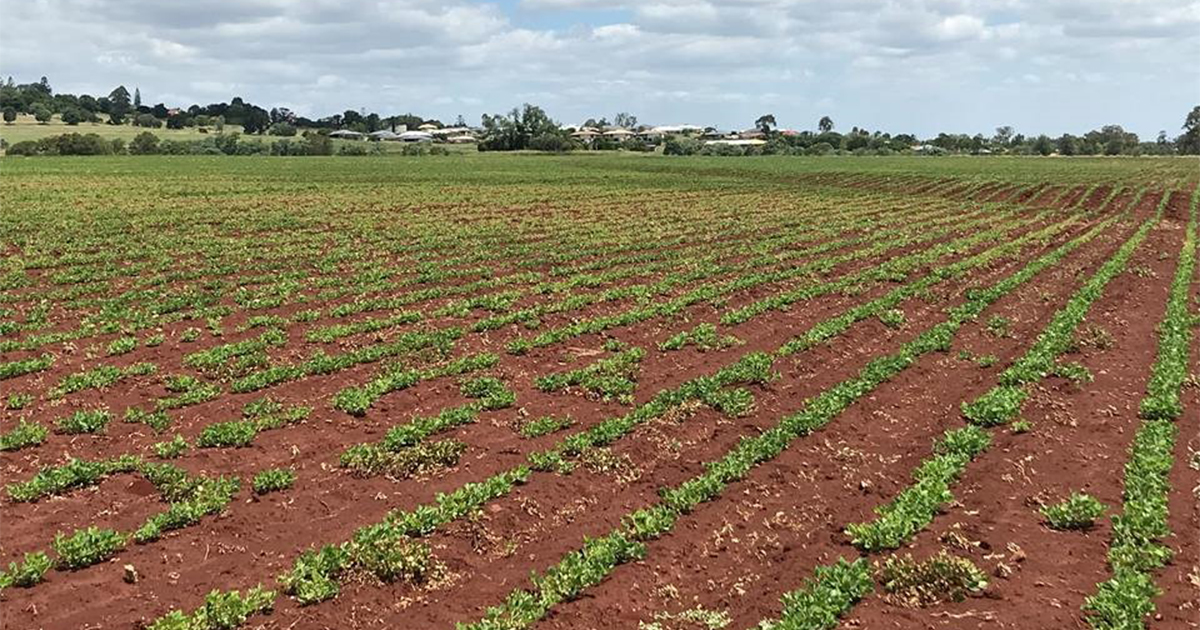 Management notes:
Management notes:
- A herbicide tank mix of Impose, Ardeo and Butress was applied to control the range of weeds present including nutgrass, melons, star burr, cobblers pegs, thornapple and wild radish.
Week 4
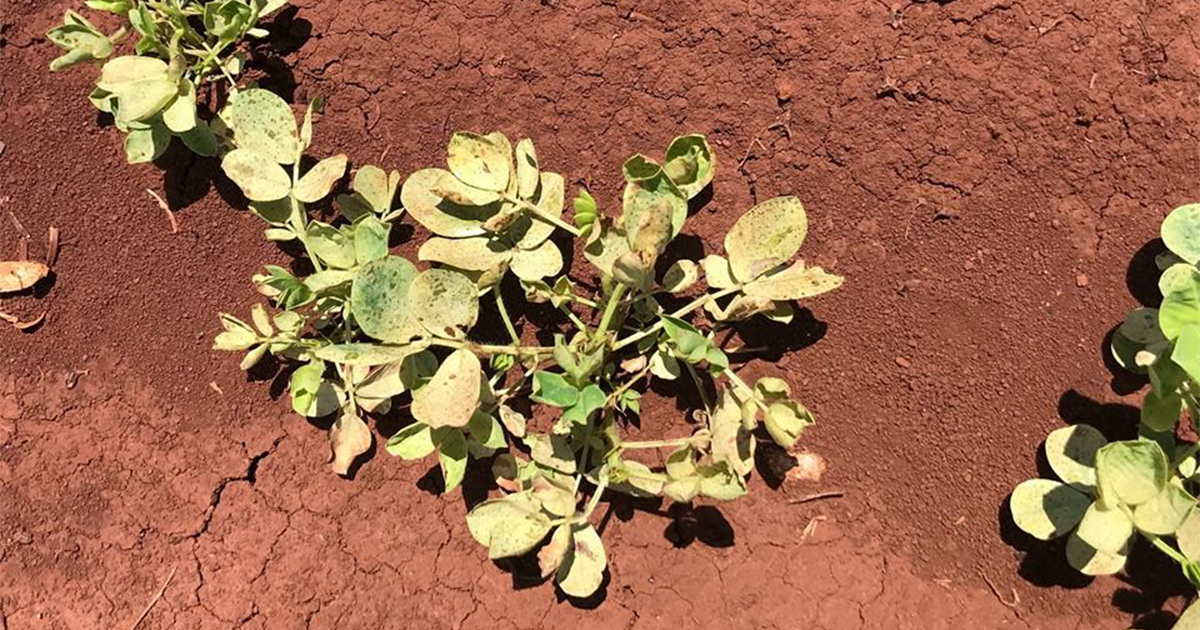 Peanut mites have been found widespread in this peanut paddock due to the prolonged dry conditions. Monitor your peanut paddocks closely.
Peanut mites have been found widespread in this peanut paddock due to the prolonged dry conditions. Monitor your peanut paddocks closely.
Management notes:
- An outbreak of peanut mites was found in distinct patches across this peanut paddock. Damage was selective but severe where the plant leaves appeared a yellowish, white colour. Peanut mites appear infrequently most seasons, during periods of hot dry weather, but damage is usually minimal. The mites usually disappear after rainfall and the plants outgrow the damage. Plant death can occur if left uncontrolled and the hot dry period continues.
- As there was no rain forecast, and the damage was widespread and severe, it was recommended to spray the crop.
- The insecticide controlled the mites and the crop will continue to be monitored.
Week 5
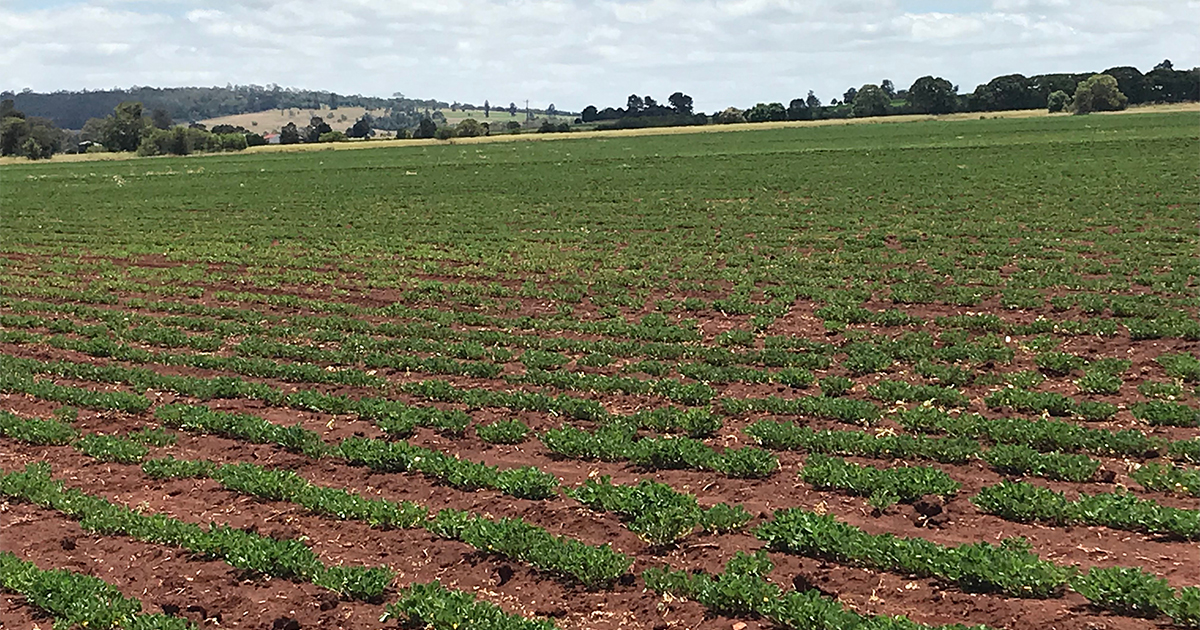 Management notes:
Management notes:
- The insecticide for mite control (dimethoate) has worked well, with the affected plants recovering well.
- Patches where the peanuts were affected can still be seen, however not as distinct as it was when first discovered.
- Peanut paddocks should still be monitored for mites; though it is getting harder to see the mite affected patches now as the peanuts are wilting due to the dry and all look silver during the day. Closer inspection should demonstrate whether it is mite damage or moisture stress.
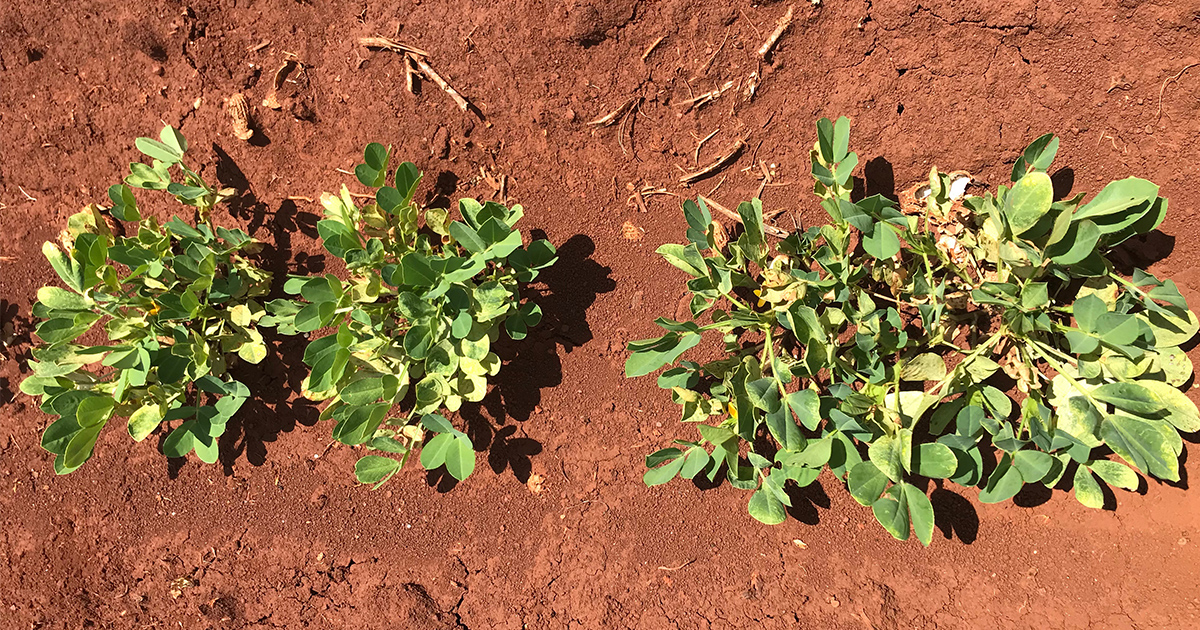 The insecticide applied last week for mite control (dimethoate) has worked well, with the affected plants recovering well.
The insecticide applied last week for mite control (dimethoate) has worked well, with the affected plants recovering well.
Week 6
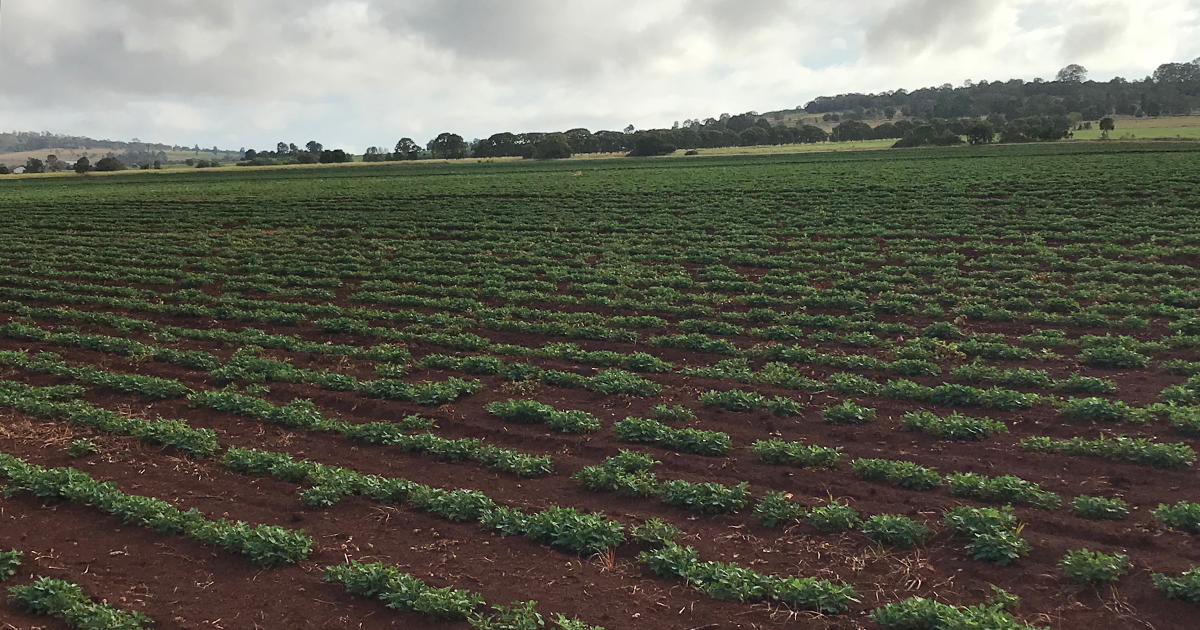 Management notes:
Management notes:
- Peanuts are looking healthy despite the prolonged dry weather.
- The crop is flowering and starting to develop pegs.
- A question often asked with peanuts is the detection of leaf diseases early on in the season. It is common for herbicides used to spray broadleaf weeds to cause a phytotoxicity effect (leaf burn) on the peanuts leaves, which can be mistaken for leaf spot or another leaf disease. Diagnosis can be difficult so consult your local agronomist.
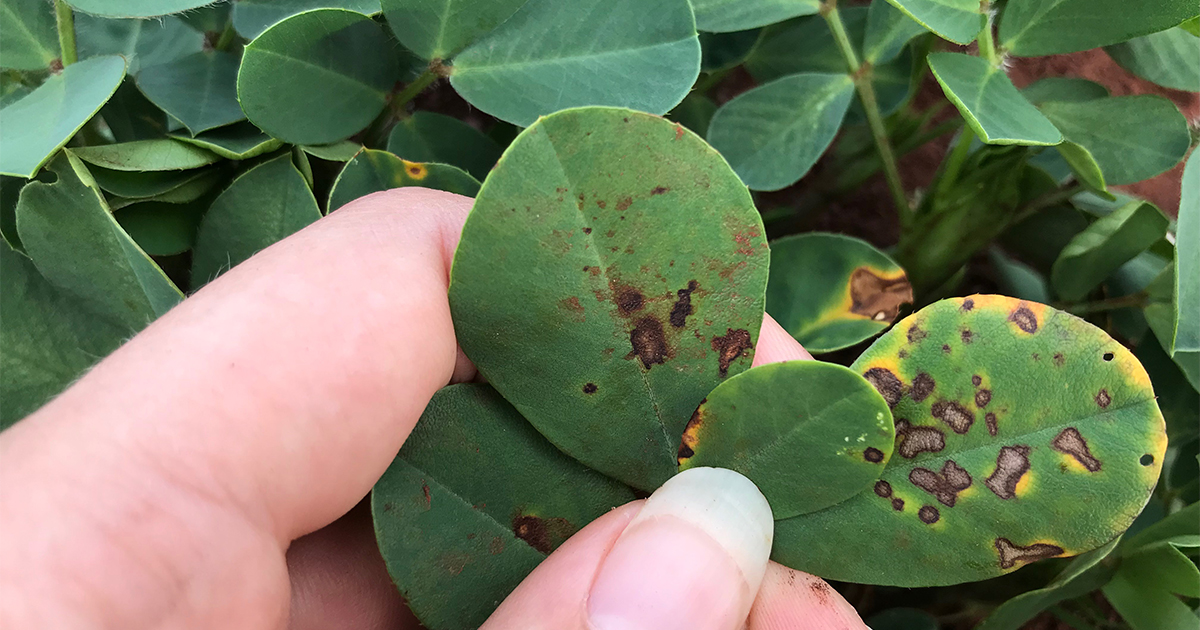 Leaf burn from herbicide damage can look like leaf spot.
Leaf burn from herbicide damage can look like leaf spot.
Week 7
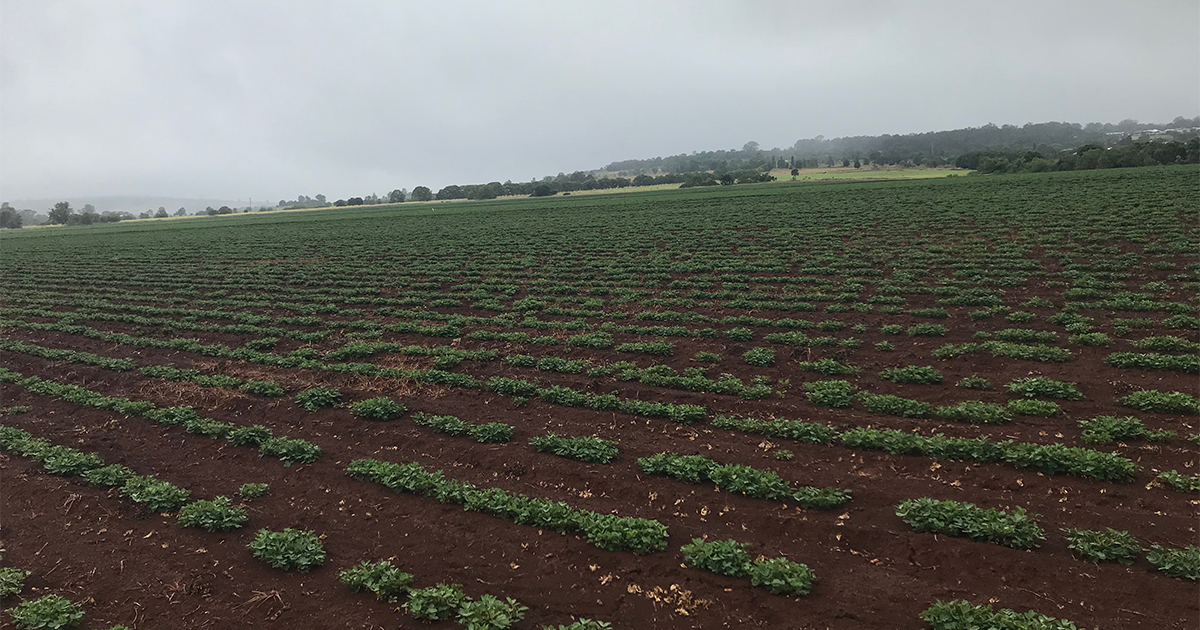 Management notes:
Management notes:
- Peanuts received 10 mm of rainfall this week.
- Good root development.
- Crop continues flowering well and plants are healthy.
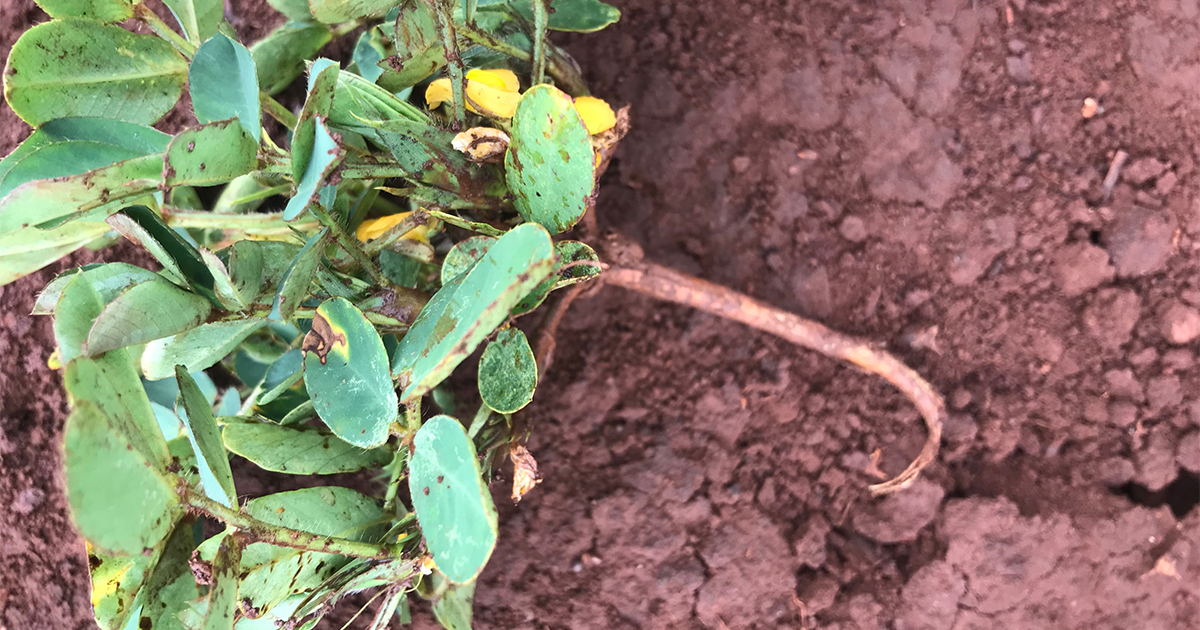 Good root development to support the crop through flowering and podding.
Good root development to support the crop through flowering and podding.
Week 8
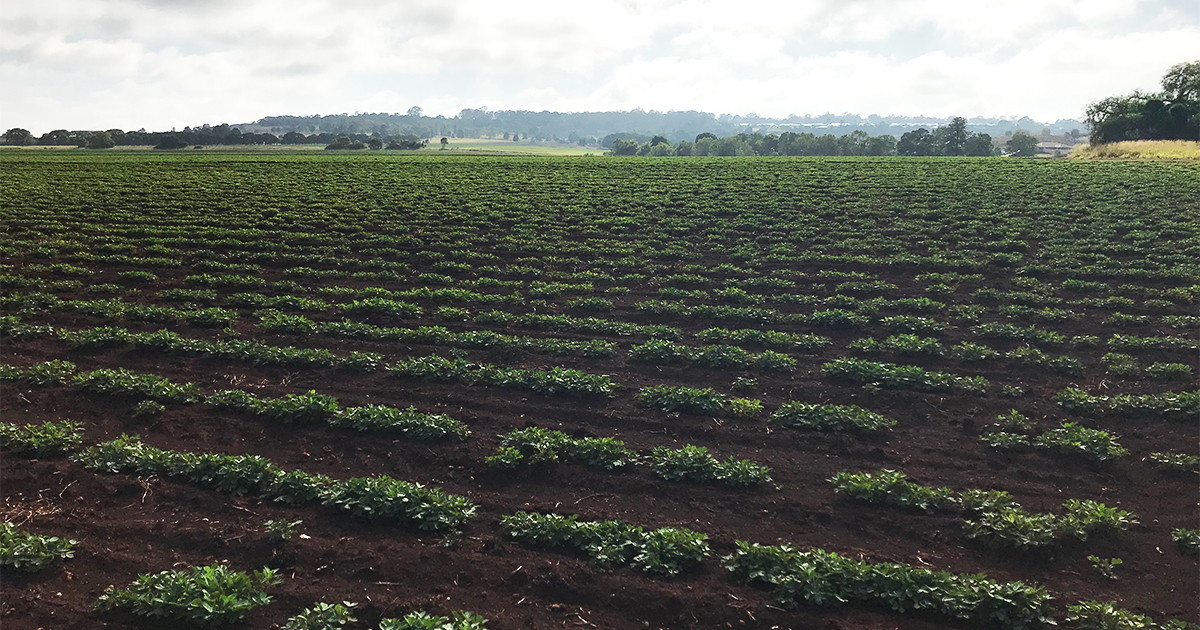 Management notes:
Management notes:
- The peanut plants are continuing to develop and are looking healthy and green despite the dry.
- Flowering is continuing and pegs are developing. Decent rainfall is required very soon to ensure continued plant growth, flowering and pod development.
- Peanuts are very drought hardy, with the ability to “sit and do nothing” through extended dry periods. If decent rainfall occurs the crop will then develop as normal and good yields can still be achieved. However they are frost sensitive and so rainfall needs to occur soon to allow the crop to mature before the first frost event.
- Total of 10 mL of rainfall was received this week.
- No insect or disease concerns at this stage.
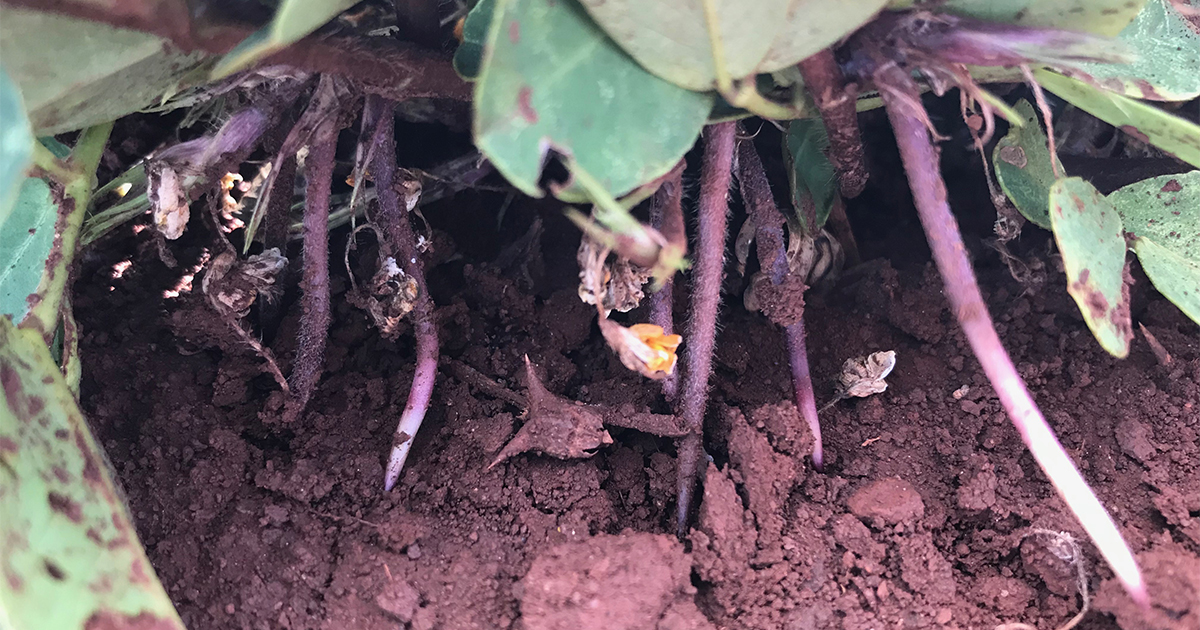 Pegging has started as this crop waits for rain.
Pegging has started as this crop waits for rain.
Week 9
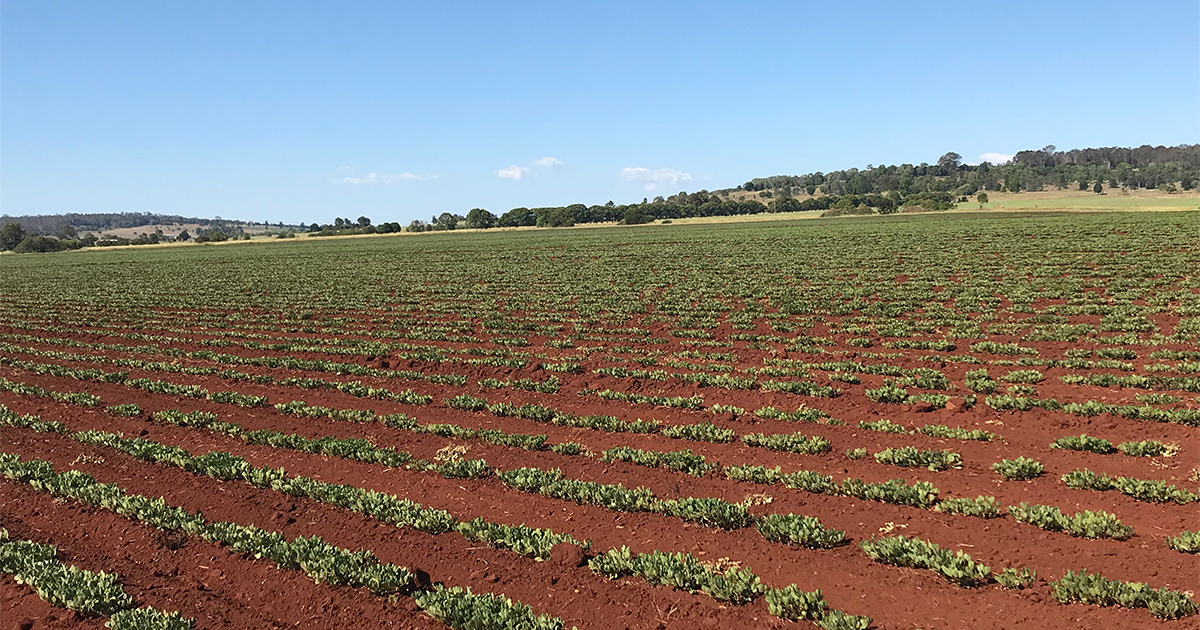
Management notes:
- Peanuts are looking very drought stressed and are now reaching a critical development period (pod development). Even in the dry they’ve managed to flower and set some pods.
- Significant rainfall is now required. Should rainfall not occur these pods are likely not to develop. Future rainfall may allow the plants to flower again and set more pods.
- Rain in the next few weeks is critical. All dry land peanut growers are hoping for a wet autumn and a late first frost.
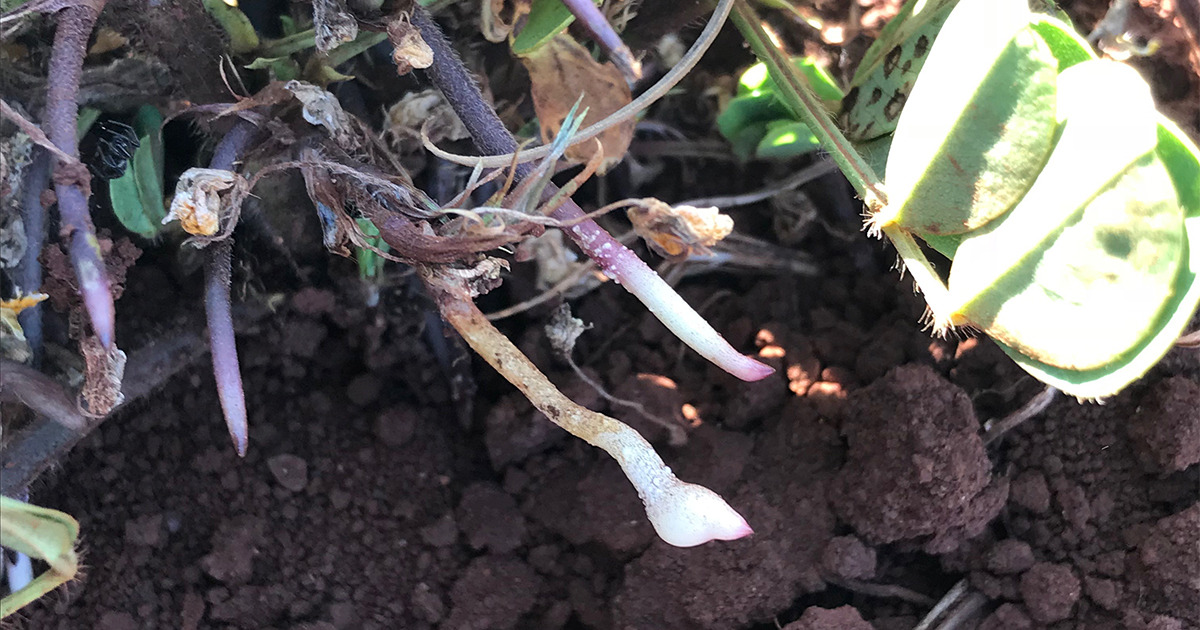
Week 10
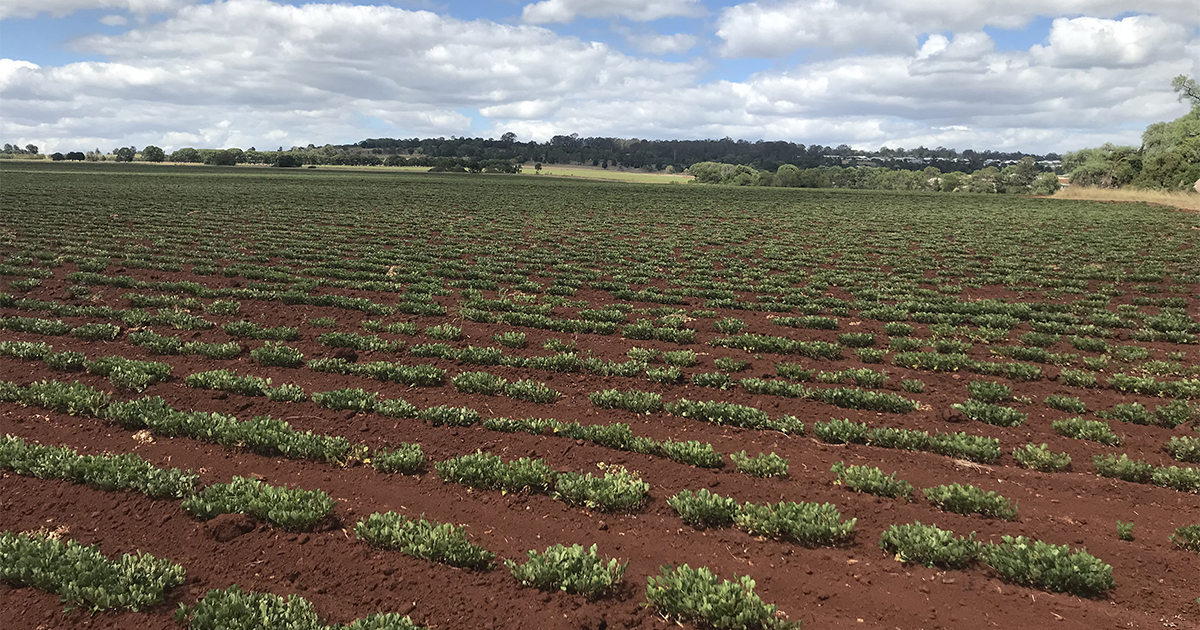
Management notes:
- Little change in the crop from last week. Rainfall is needed urgently if the crop is to make it to harvest.
- The crop was inter-row cultivated this week. This was done to remove some weeds that had geminated on the 10 mm rainfall events that occurred several weeks ago, and also to remove some weeds that eventually survived the herbicide application.
- Some of the common weeds in the area are difficult to control with the herbicide options available in peanuts. Cobblers peg and Sesbania pea are such examples. Inter-row cultivation removed the majority of these weeds prior to seed set, reducing the number of seeds to germinate next year and reducing the chance of herbicide resistance developing.
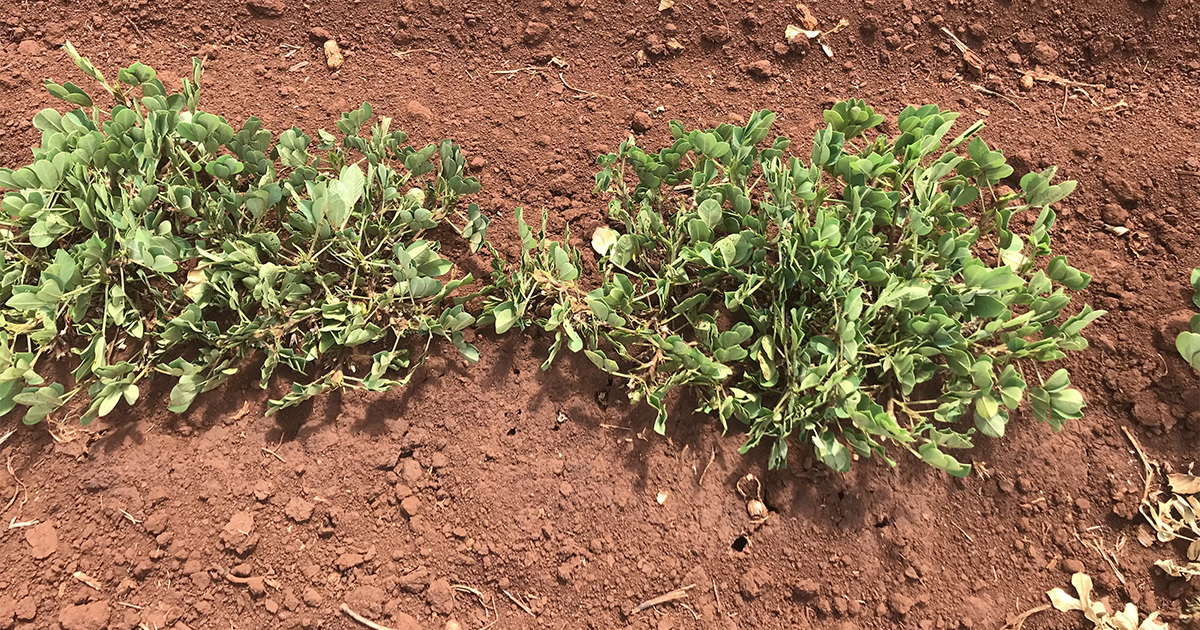 Inter-row cultivation for weed control
Inter-row cultivation for weed control
Week 11
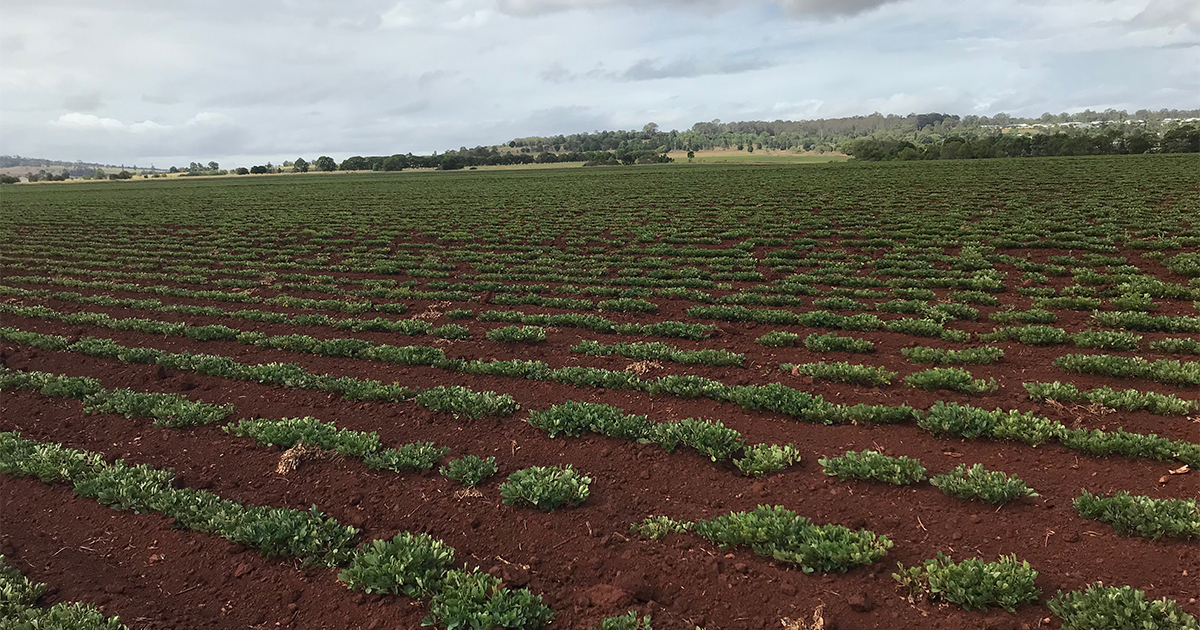 Management notes:
Management notes:
- Little change in the crop from last week. Still waiting for rainfall to assist in the development of pods.
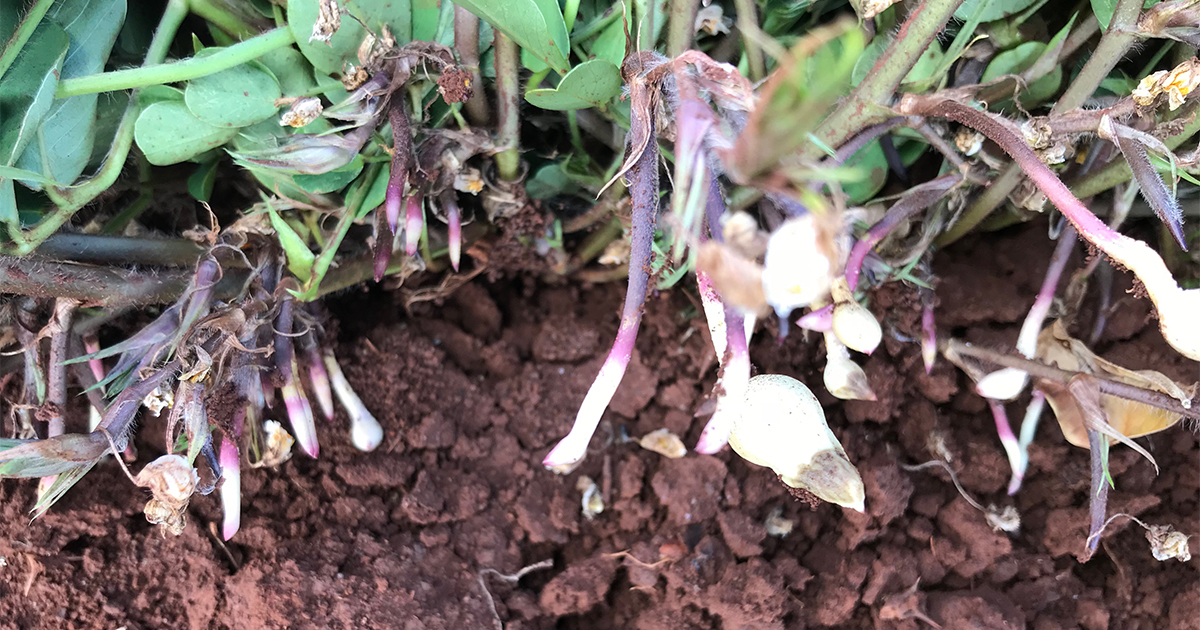
Week 12
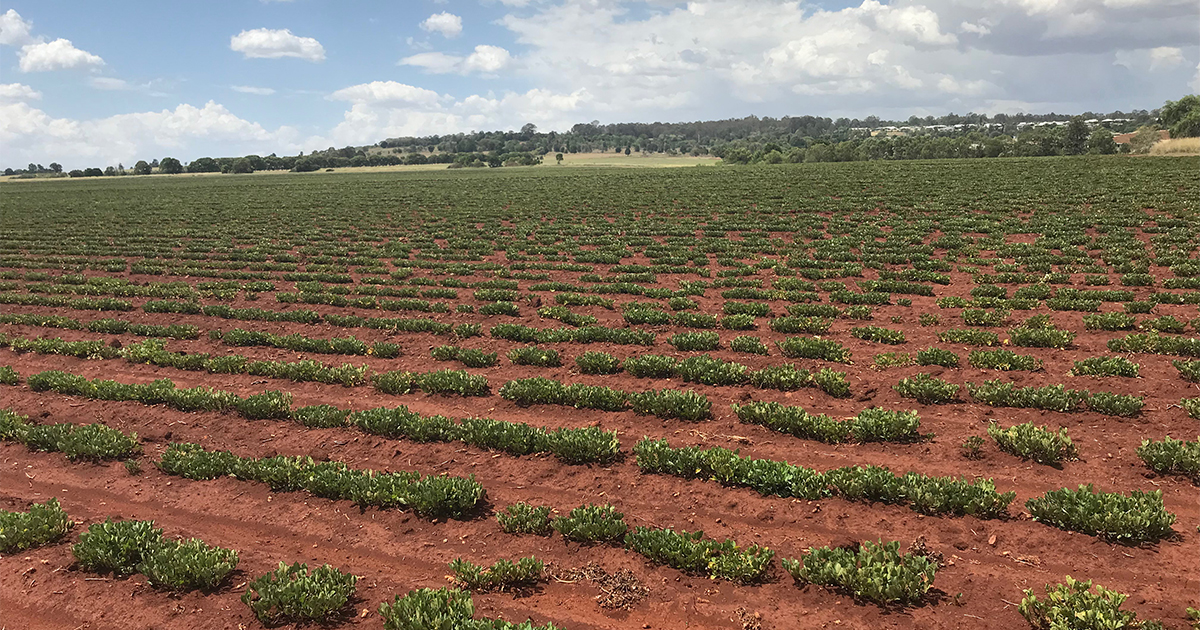 Management notes
Management notes
- No rain, no change. The peanuts are continuing the same growth trend like previous weeks.
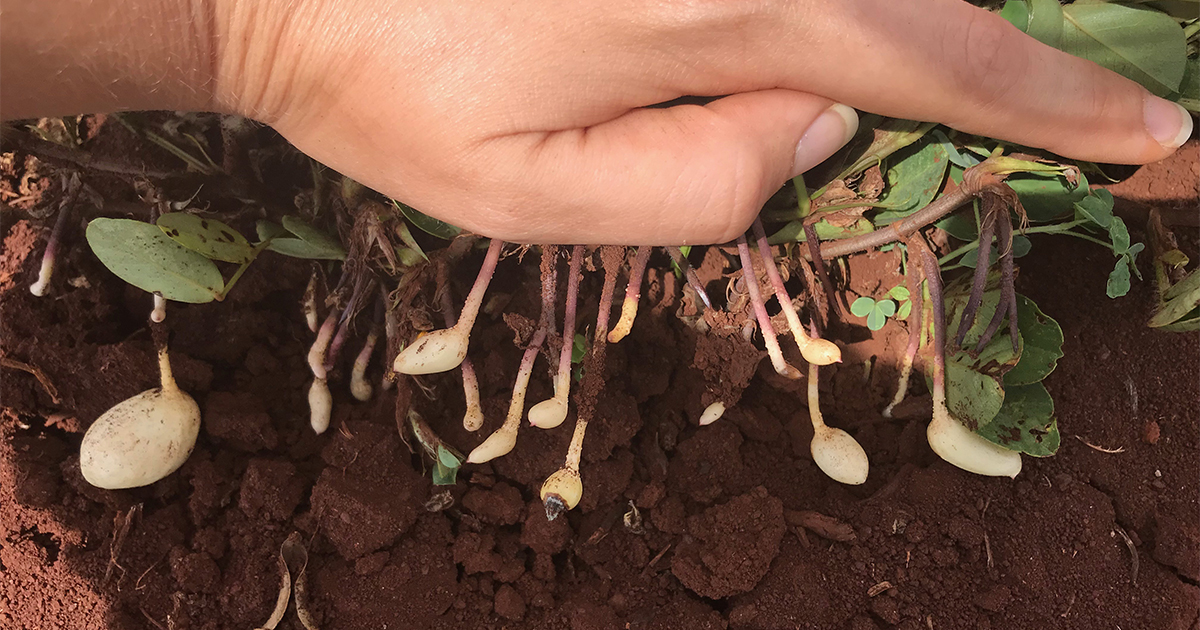
Week 13
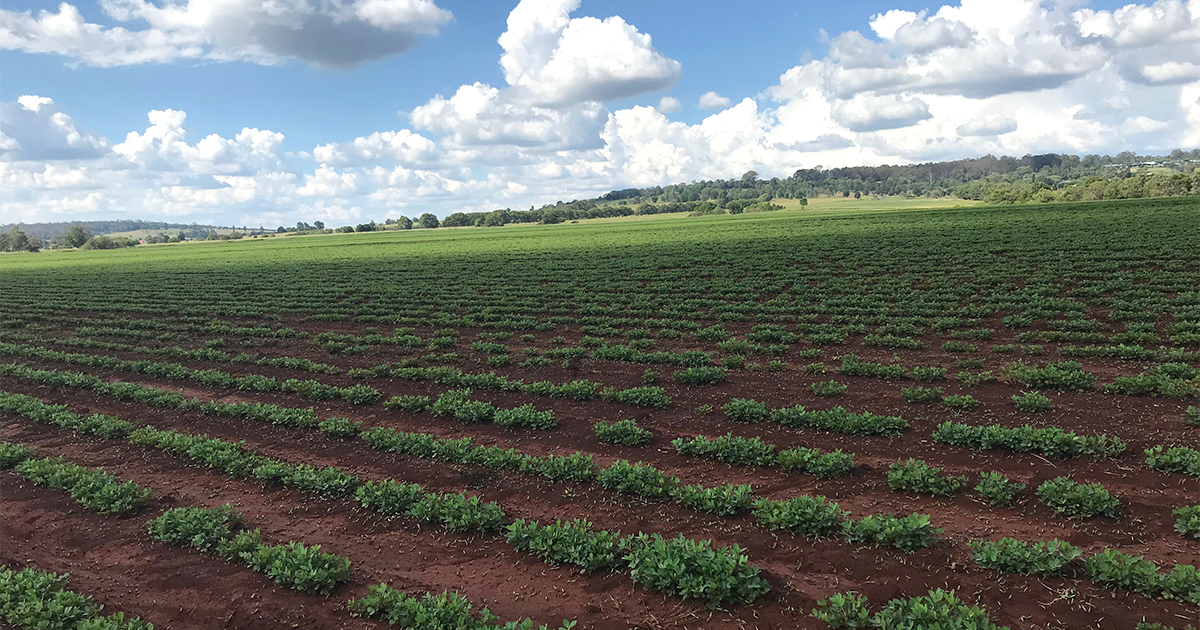
Management notes:
- With 20 mm of rain this week, the plants have responded with more leaf growth and flowers.
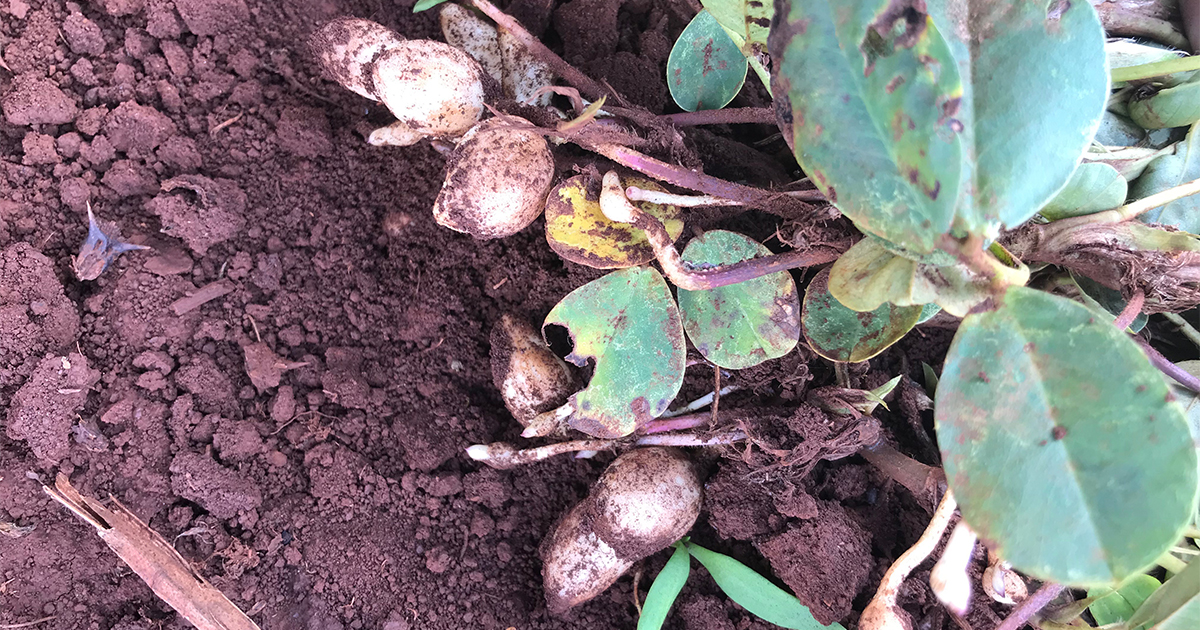
Week 14
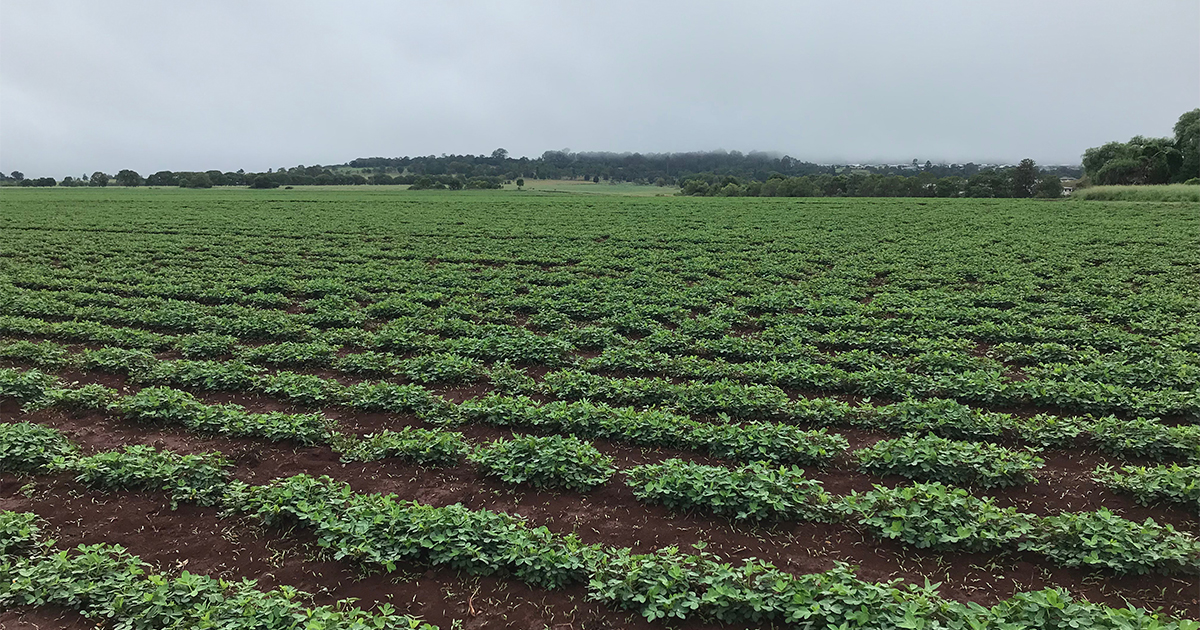
Management notes:
- The peanuts have responded well after recent good rainfall, the bushes are looking healthy.
- A total of 35 mm fell this week.
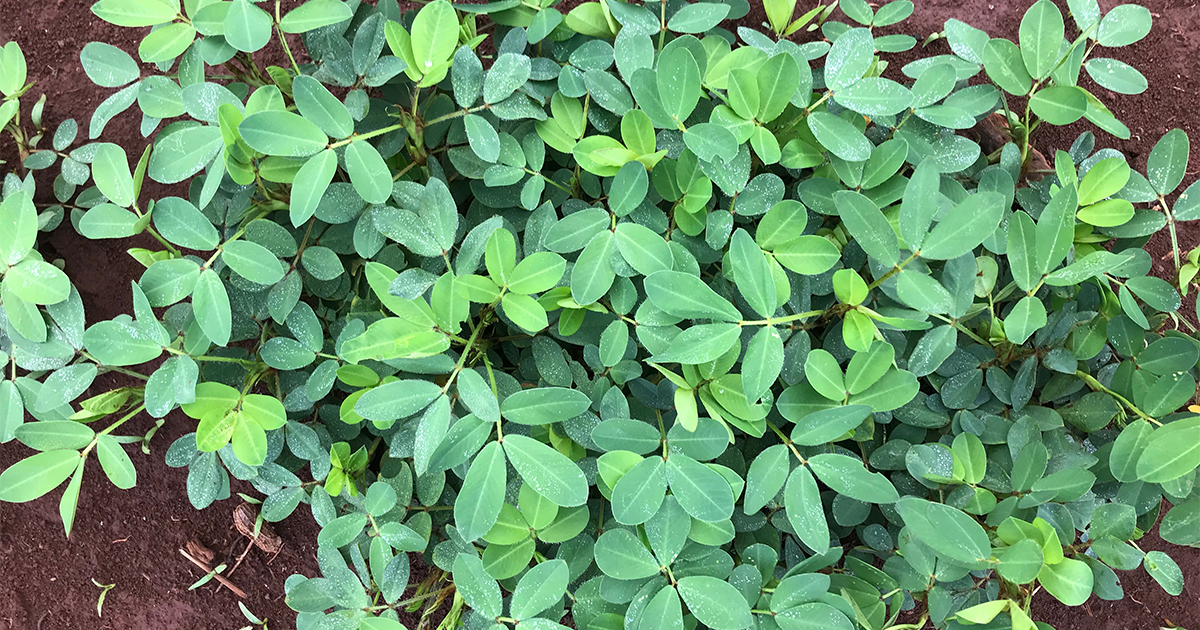 Plants certainly look fresher this week after a nice bit of rain.
Plants certainly look fresher this week after a nice bit of rain.
Week 15
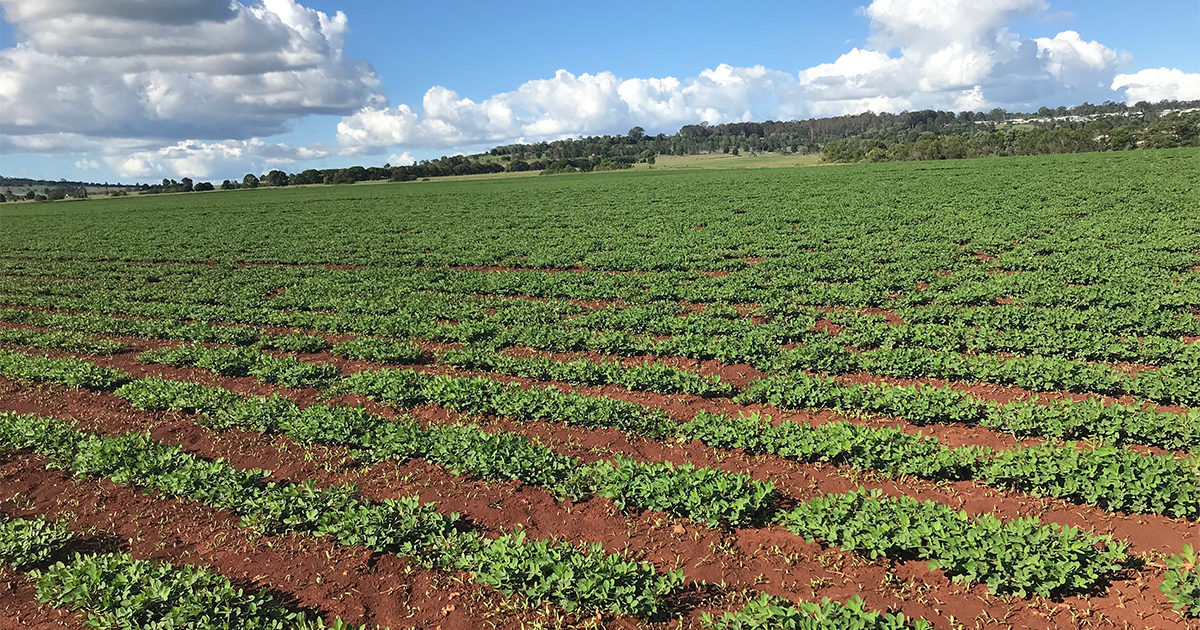 Management notes:
Management notes:
- The peanuts have responded after significant rainfall over the last few weeks and are now pegging and developing pods.
- With cooler weather, the crop’s growth is likely to be slowed. Frost is now the major risk.
- Warm weather will be beneficial to crop development.
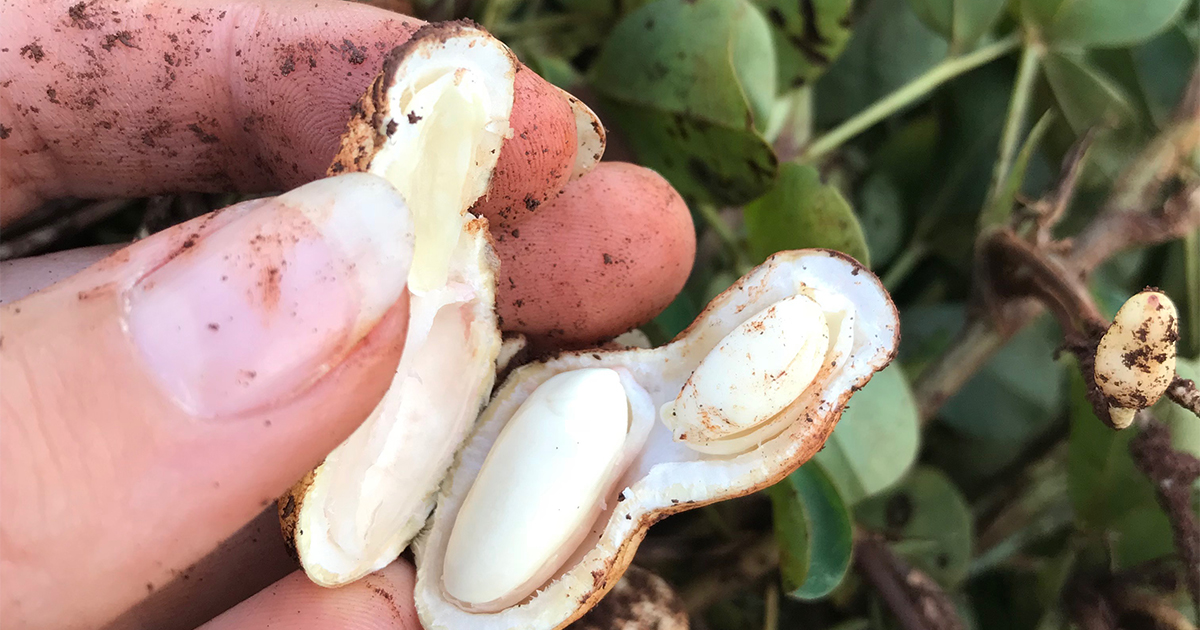 Good rain has boosted pod development.
Good rain has boosted pod development.
Week 16
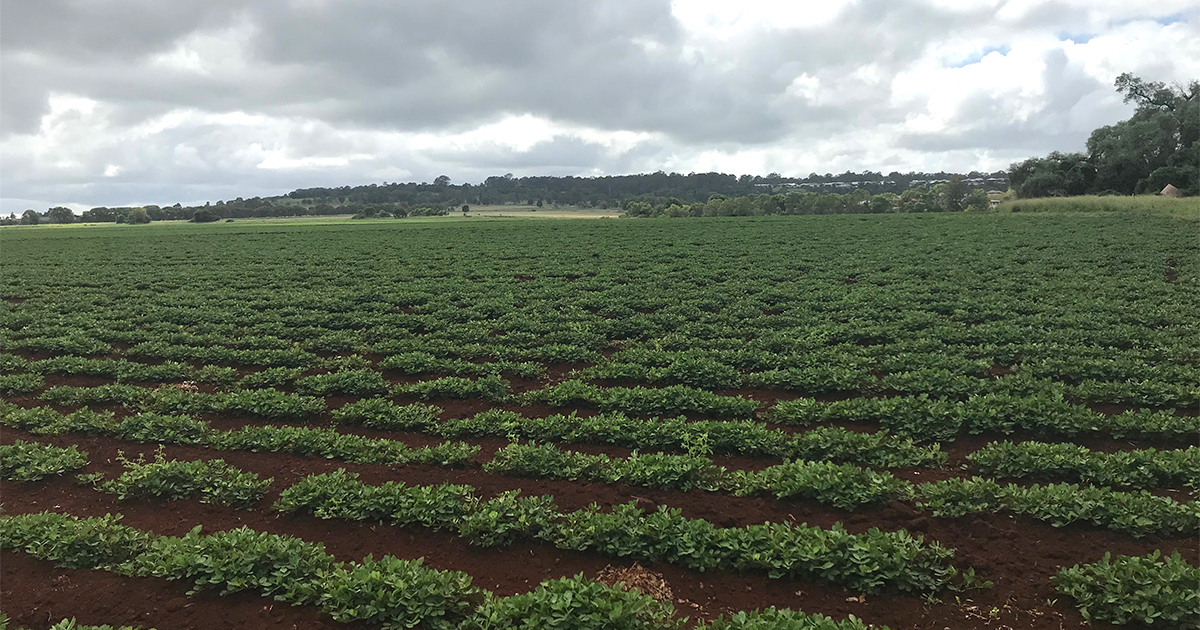
- Due to the recent rain, many weed seedlings have surfaced, therefore the inter rows have been cultivated this week.
- Peanuts are continuing to develop pods well.
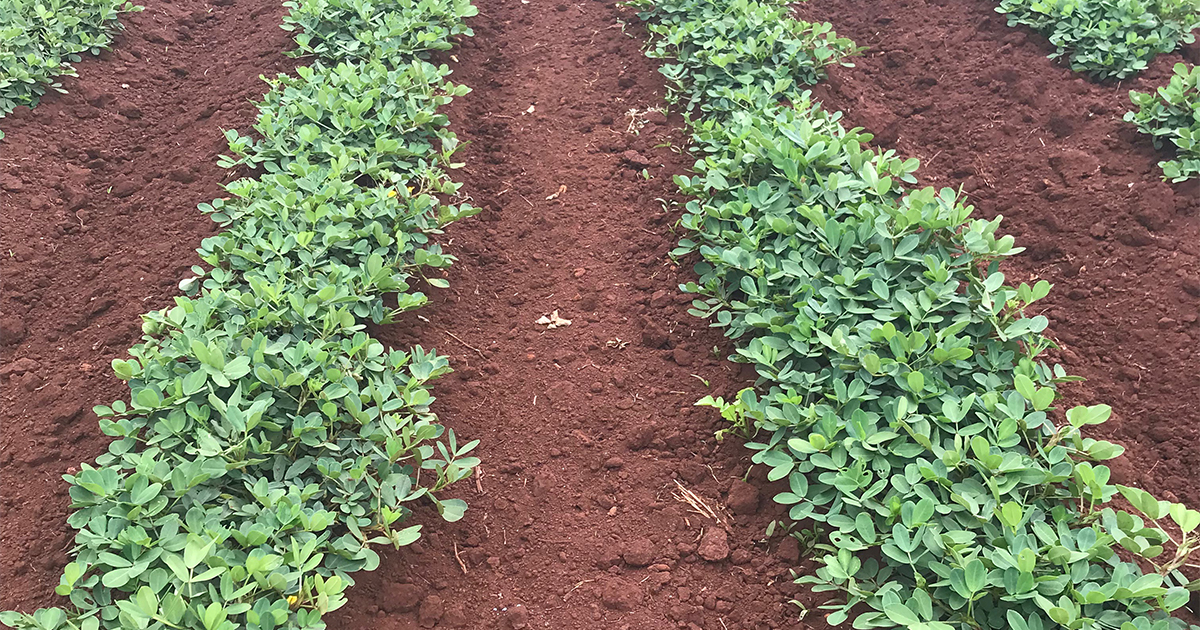 Inter-row cultivation to control weeds following rain.
Inter-row cultivation to control weeds following rain.
Week 17
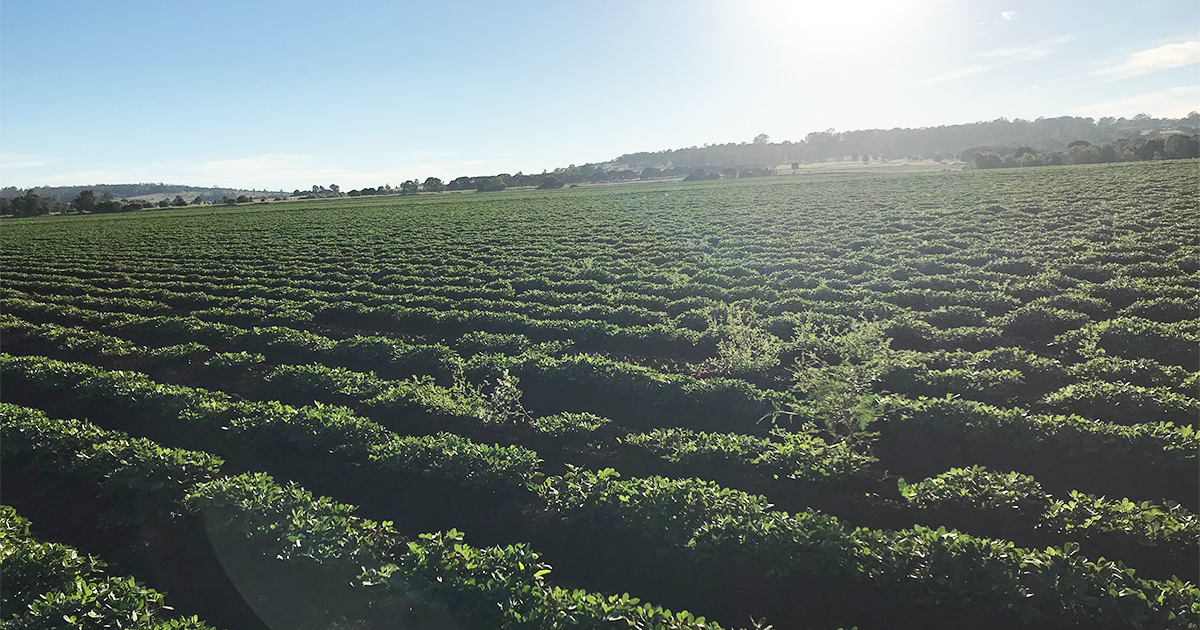 Management notes:
Management notes:
- Leaf spot was observed in the crop this week, and in other peanut crops in the district. However, infection levels are low and Orius has applied in last 3 weeks. A second fungicide spray will be required soon.
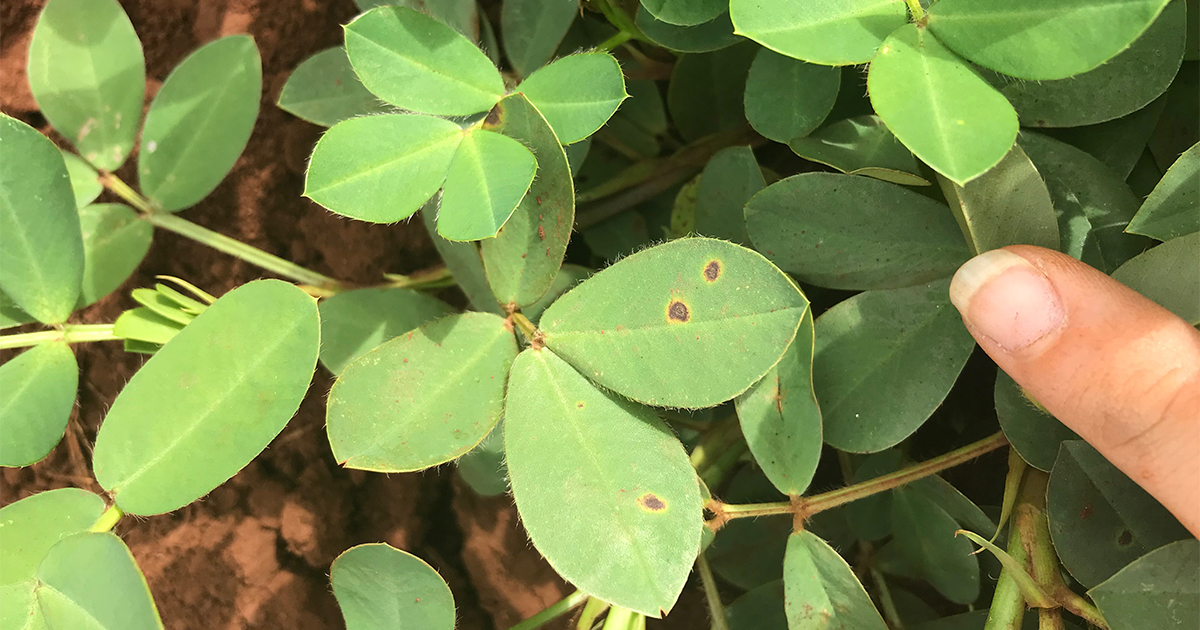 Early signs of leaf spot.
Early signs of leaf spot.
Week 18
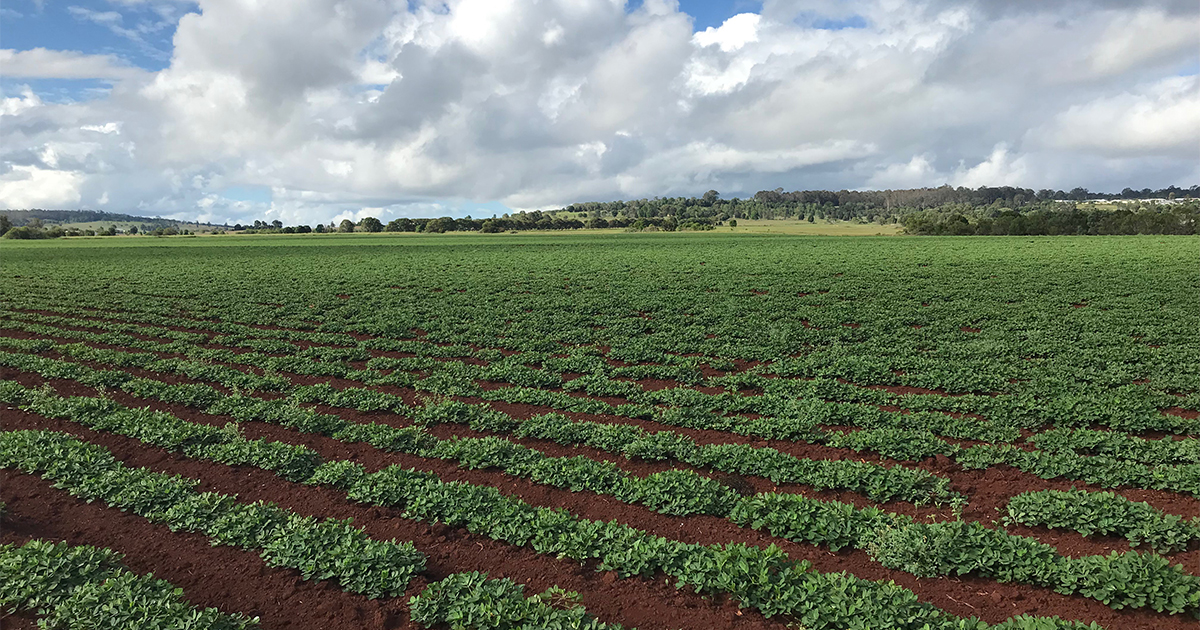
Management notes:
- This week the leaf spot became more severe due to the recent overcast and rainy days.
- It was recommended to continue to monitor to determine if a spray is required as with drier weather predicated next week may slow the disease down.
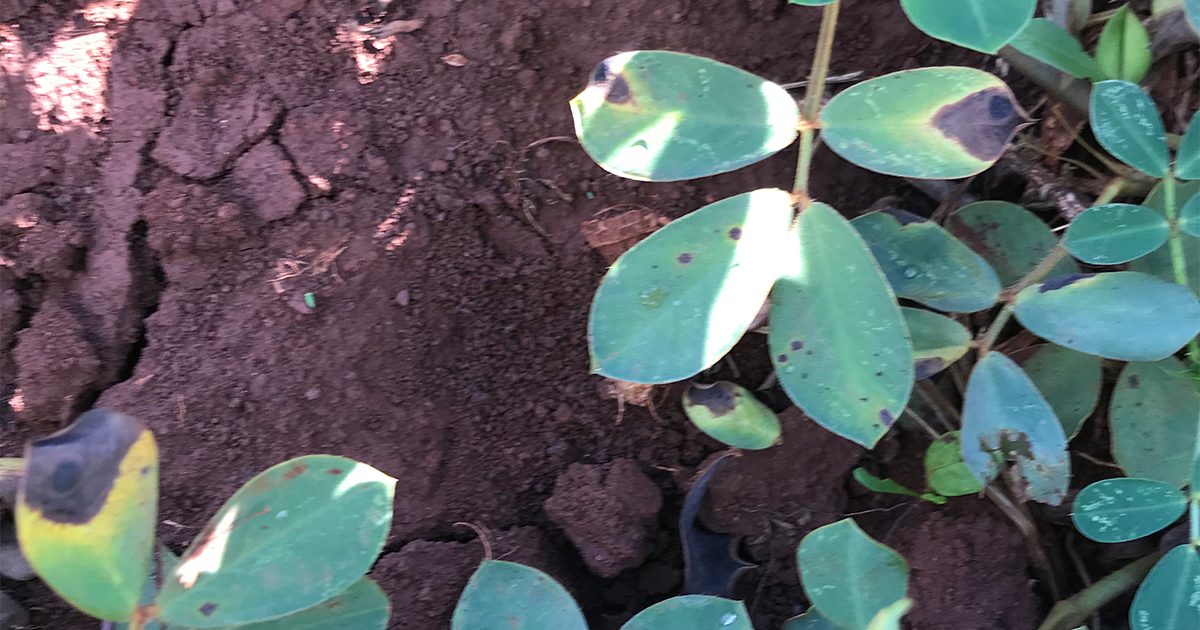 More advanced leaf spot.
More advanced leaf spot.
Week 19–20
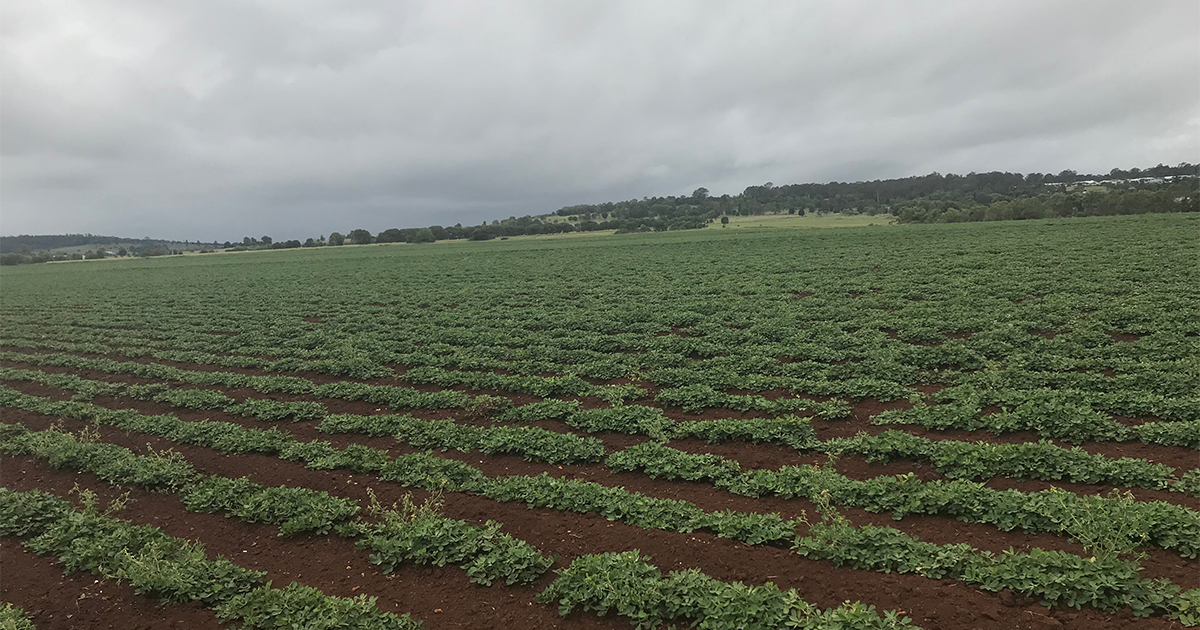
- Vertias fungicide was applied for leaf spot control. Weather conditions continue to favour the development of leaf spot.
- Net Blotch has been found in other paddocks.
- Pods are developing well with some starting to mature.
- Sclerotinia minor has been observed in one part of the paddock. This area has a history of sclerotinia. Until the last few weeks, weather conditions have not favoured sclerotinia development, so infection rate is low and hopefully losses to this disease will be minimal.
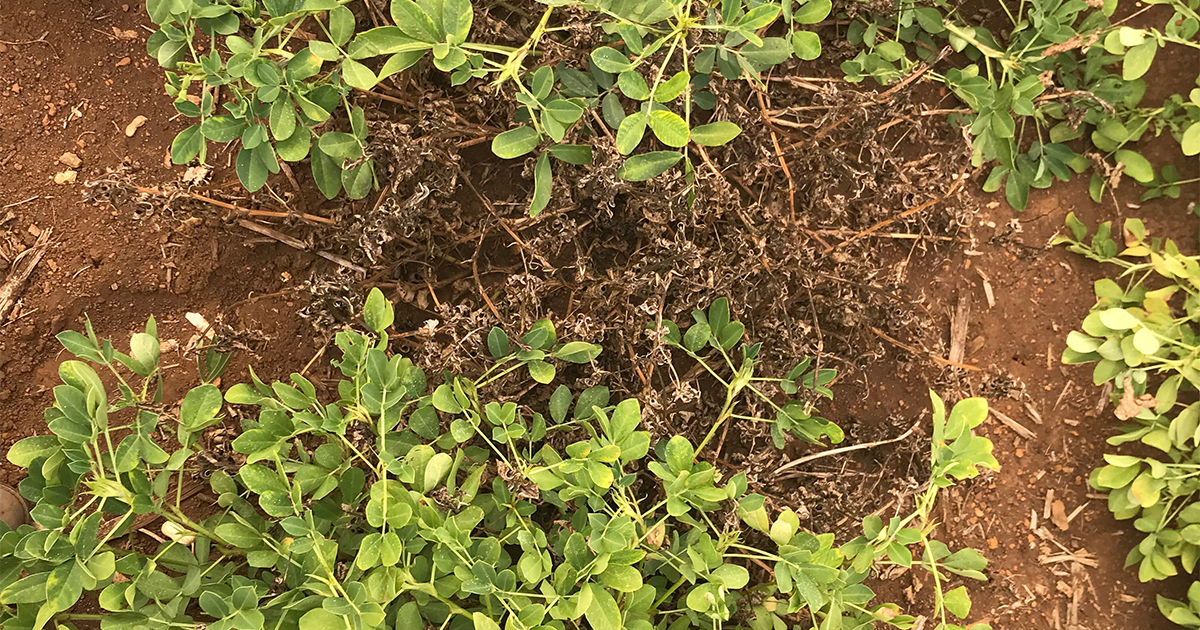 A little late-season sclerotinia.
A little late-season sclerotinia.
Week 21
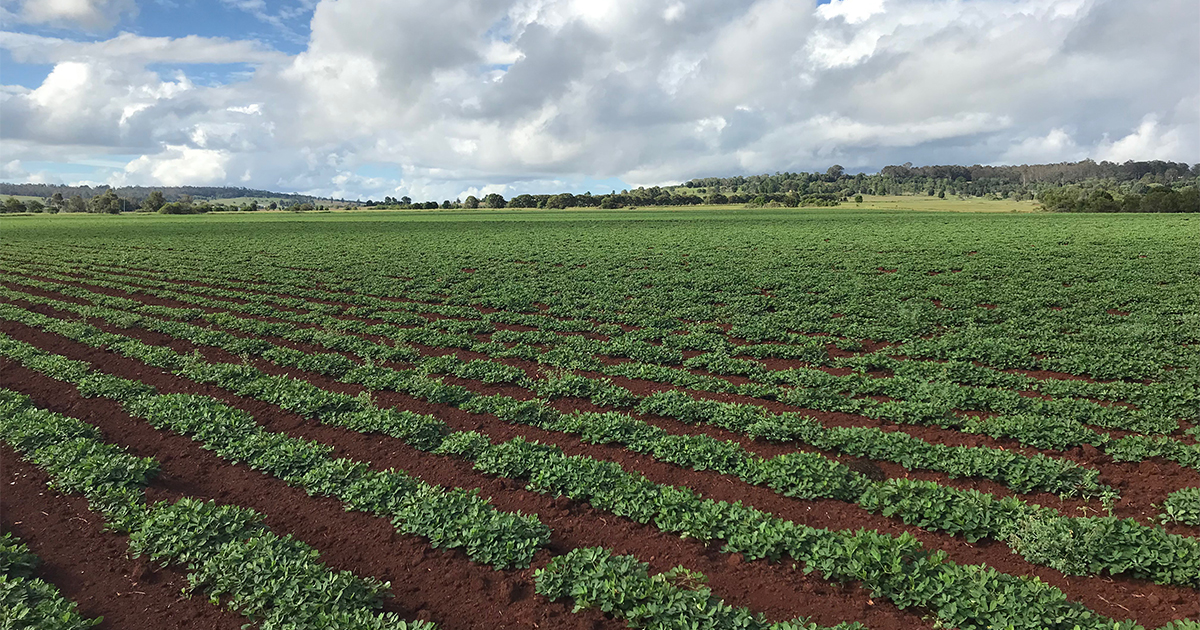
Management notes:
- Conducted maturity test by using water blasting method (see how in the video below).
- It is likely that the crop will need another 4 weeks to achieve optimum pod maturity, however weather conditions will be the limitation in achieving this.
- Will re-do test in a fortnight to identify any changes and progression in the crop’s maturity.
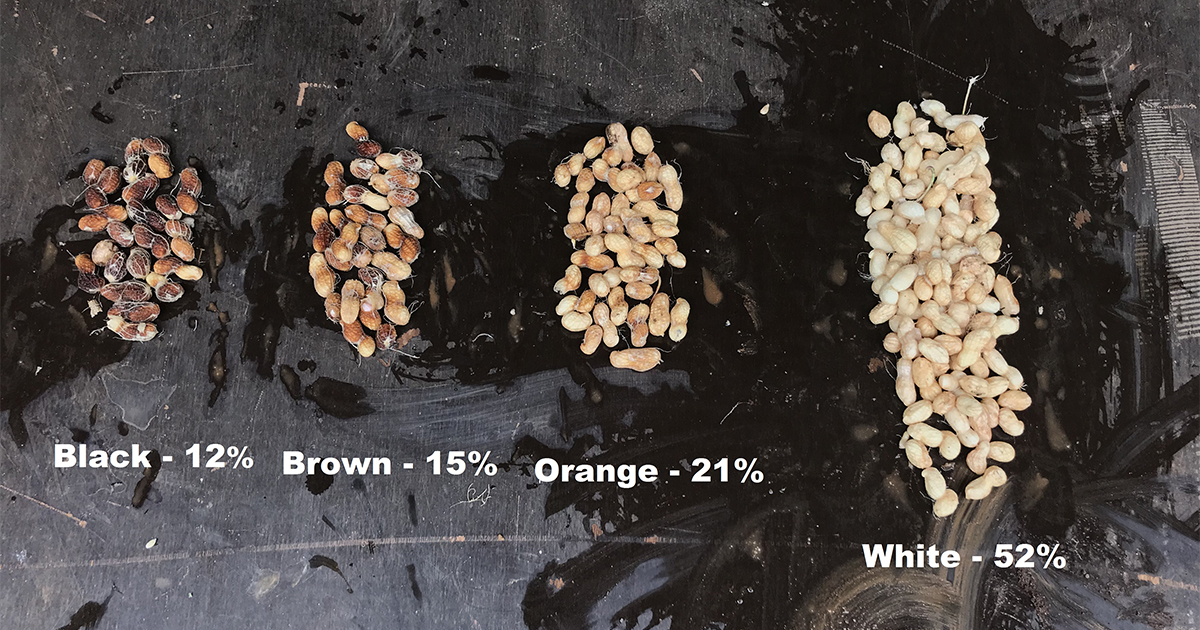 Optimum harvest time is when 70–80 per cent of the pods are mature (black mesocarp).
Optimum harvest time is when 70–80 per cent of the pods are mature (black mesocarp).
Week 22–23
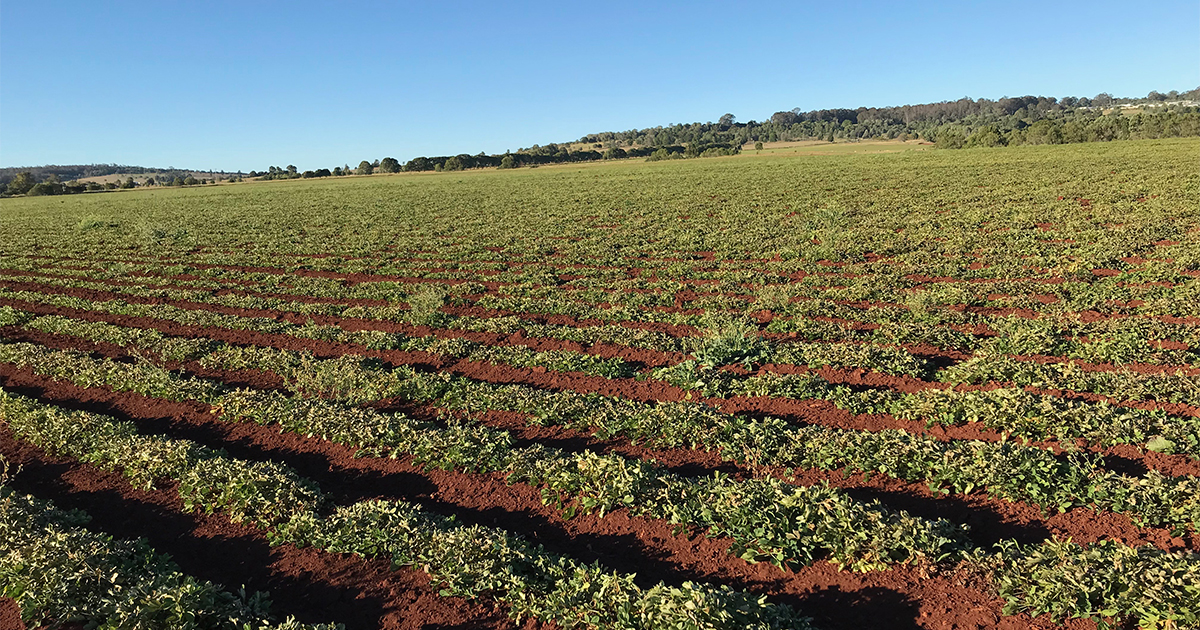 Management notes
Management notes
- A -2 frost was recorded 29th May – as a result the plants have been frosted. With the leaves frosted the pods will not be develop further, therefore the crop will be dug at the next possible opportunity.
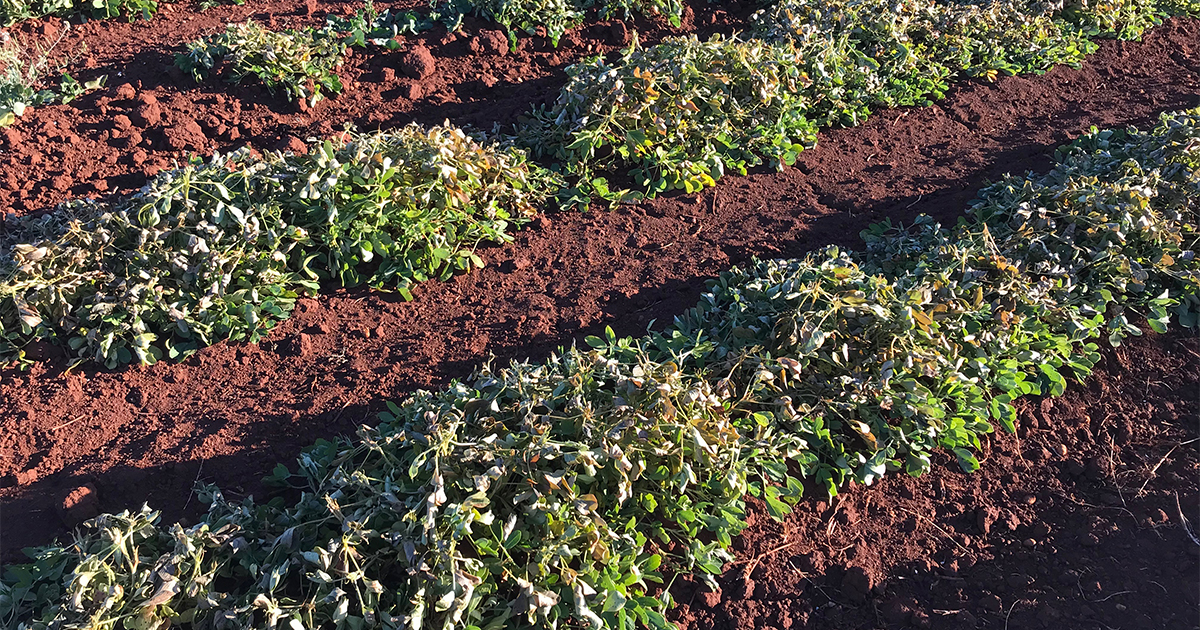
Week 24
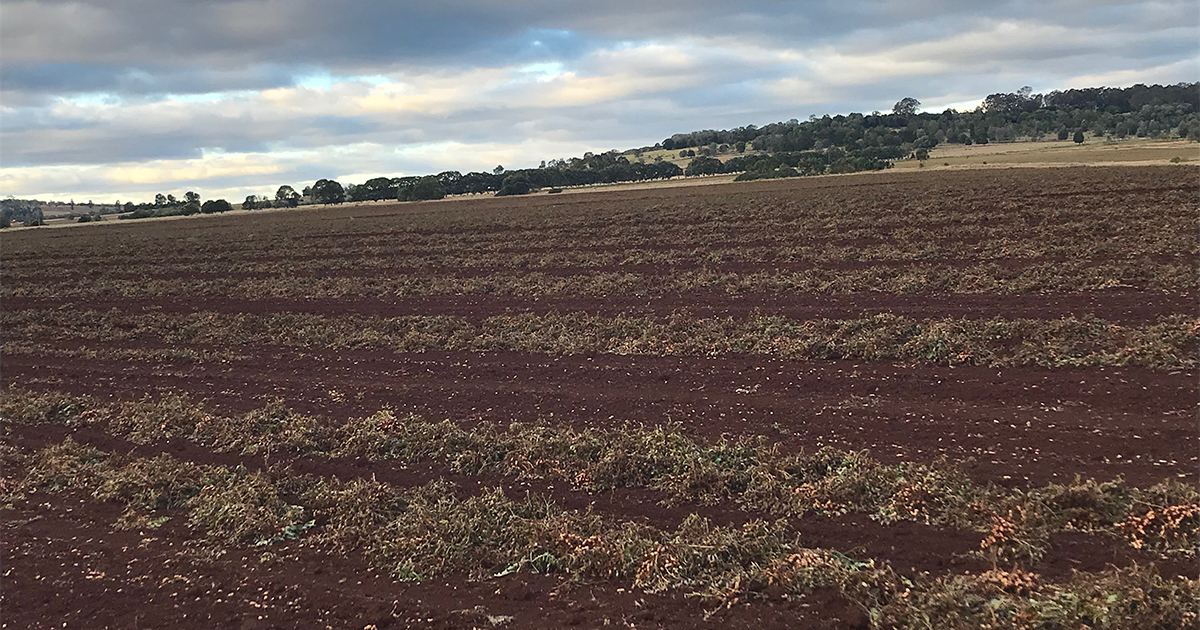
- Digging commenced on Thursday 30th May. Crop would normally be threshed within 7 days, however, due to rain over the weekend, this will be delayed to when the paddock dries out.

Harvest
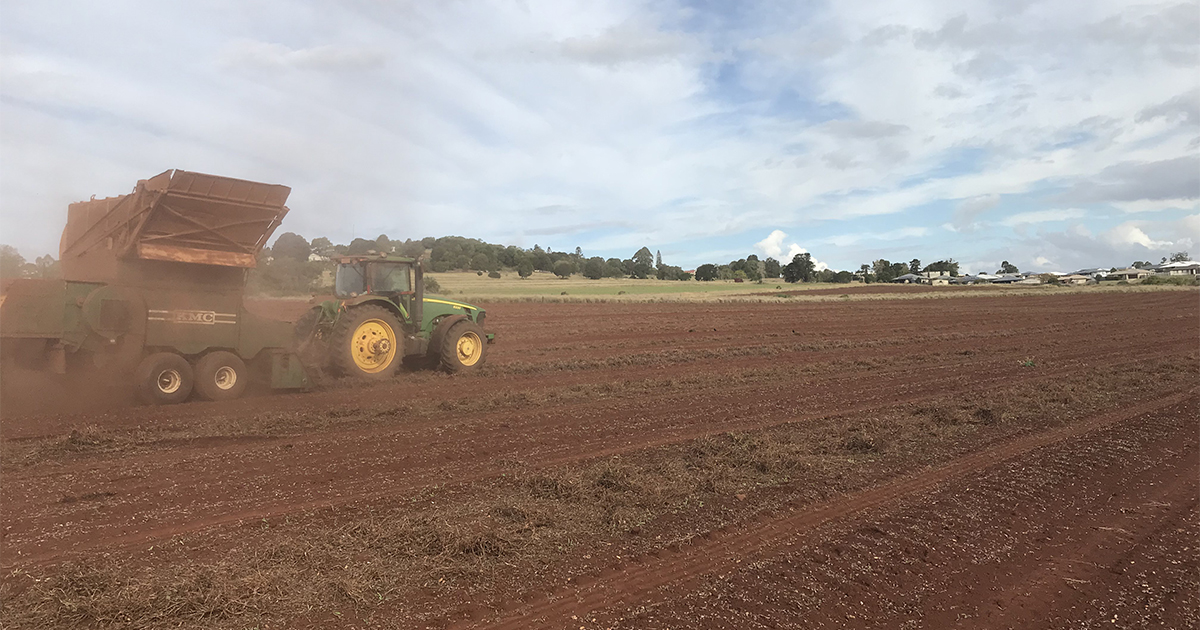
Management notes:
- After almost no in-crop rain, threshing was also delayed due to a period of rainy weather.
- The crop achieved a peanut yield of 1.25 tonnes per ha and 2.5 round bales per ha of straw.
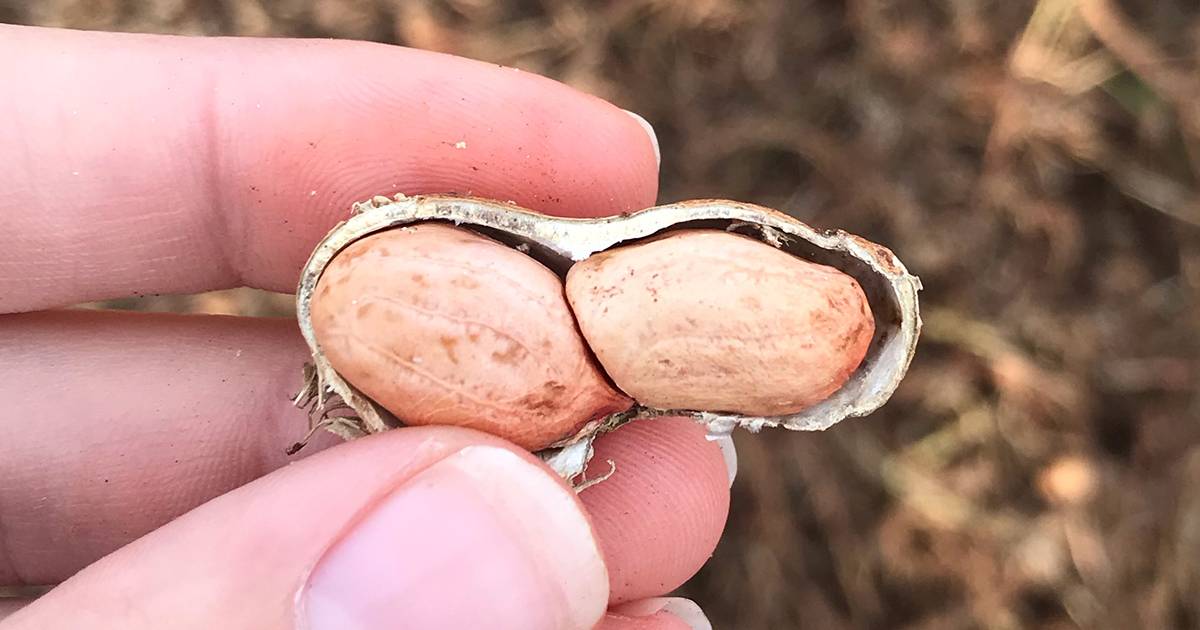
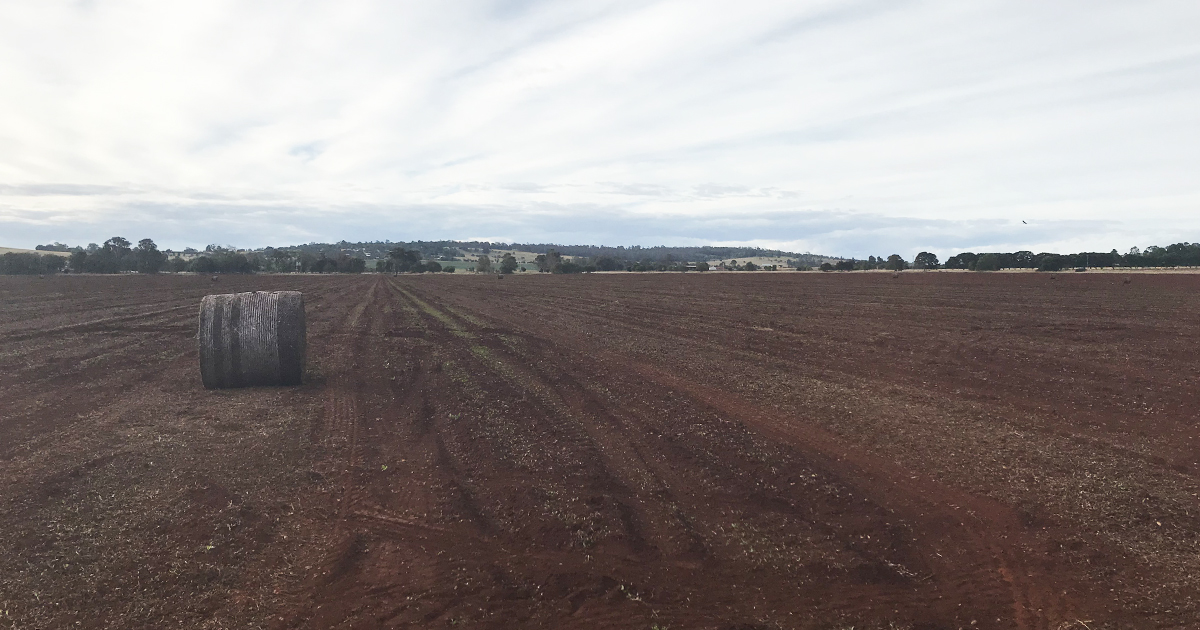
Read Pulse Check blog articles | Pulse Check Coastal facebook | Subscribe to the monthly newsletter


